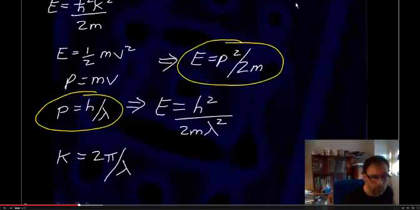
November 26, 2013, by Teaching at Nottingham
Lectures, Laptops, and Learning
“The beauty of YouTube is that it’s … chock-full of fantastic educational content for students and teachers alike to access and learn from.”
Dr Philip Moriarty: “That quote is taken from a short blog post entitled “Serve up Some YouTube EDU This Summer” (which I stumbled across just as the summer was ending).
“As someone who has, over the last four years or so, invested quite a bit of time making YouTube videos with Brady Haran for a number of his very many successful YouTube channels (including Sixty Symbols, Numberphile, and Computerphile ), I have been giving quite a bit of thought of late to the question of whether or not YouTube is indeed “chock-full of fantastical educational content”. I also use YouTube videos to support my undergraduate teaching (see Moriarty2112 ), and the question of the educational value, or otherwise, of videos and, more broadly, online content – including MOOCs (which are already not quite as trendy as they were just a few months ago) – is something that was exercising me more and more as my first lecture of the new academic year drew near.
“Physics is conceptually challenging. It requires not only deep engagement with the material but the coupling of mathematical and physical concepts, and, particularly with such areas as quantum physics and relativity, is often very counter-intuitive (to the point of being deeply unsettling). Although ‘real-world’ analogies, delivered in short and enthusiastic few-minute videos, might capture the imagination of the YouTube viewing audience, they can often sell the physics student short. I’ve recently blogged about this aspect of the distinction between ‘edutainment’ and education over at the Institute of Physics physicsfocus site.
“To what extent, however, can YouTube and other online video content enhance, rather than impede, deep learning amongst undergraduates? Deep learning necessitates active engagement with the material. This rarely happens in the traditional lecture format, which is first and foremost a content delivery system (and a rather archaic one at that). I have always been of the opinion that the role of the traditional lecture is simply to enthuse students about the material; the majority of learning happens outside the theatre when students attempt problems and discuss the physics with their tutors and peers.
“It is possible, however, to bring some of that active engagement with the material into the lecture theatre. In Physics here in Nottingham quite a number of lecturers use keypads for multiple choice questions during the lectures. These can be a very effective method of encouraging student engagement and judging the extent to which they are grasping the material. An even better way of increasing student engagement is the Peer Instruction method introduced by, fittingly, the physicist Eric Mazur. I thoroughly recommend Mazur’s “Confessions of a Converted Lecturer” video where he outlines his rationale and motivations for introducing the peer instruction method to his lectures. His comments about his experience of traditional lecturing certainly struck a chord with me.
“So how might YouTube fit into the type of modified lecture experience, where students learn from each other, which Mazur describes? First, it enables content delivery outside the lecture theatre and in a rather more personalised way (if the video uploads are effectively “one-to-one” tutorials, rather than a capture of the lecture). This not only frees up time in the lecture theatre for the type of approach pioneered by Mazur, it also allows the students to revisit the material at their leisure. Second, the comments section under each YouTube video can be used to encourage questions from the students and, in the best cases, foster debate. (Strict moderation is required in order to sift out trolling, however!).
“YouTube is certainly seen by many as a key element of the brave new world of online education. While we need to temper our enthusiasm a little and not get too carried away, mixing online delivery with more traditional forms of teaching certainly has immense potential for innovative and engaging new approaches to student learning.”
Dr Philip Moriarty
School of Physics and Astronomy

Philip has brought my attention to a TEDx talk he gave a few weeks ago in Derby, on the subject of online education/edutainment: https://www.youtube.com/watch?v=69sBWIhWdEw
It builds on the themes in this blog post.